Amazon Kindle Fire Review
by Anand Lal Shimpi & Vivek Gowri on November 29, 2011 3:31 AM EST- Posted in
- Tablets
- Mobile
- Amazon
- Kindle Fire
- Kindle
The iPad Comparison
I'll be honest here (I always am?): I don't understand the iPad comparison. The Kindle Fire and iPad 2 couldn't be more different. They are vastly different sizes, shapes and prices. They even serve slightly different functions. The search for an iPad killer reminds me of the search for a Voodoo killer back during the heyday of 3dfx in the late 1990s.
The Kindle Fire serves entirely different purposes than to take marketshare away from Apple.
Why would Amazon enter the IPS LCD equipped multitouch tablet business to begin with? For users who are content reading ebooks on an e-ink screen, the vanilla Kindles are as good as they get. The problem is for users looking to consolidate devices, they may find themselves carrying a Kindle and a tablet of some sort (likely an iPad) and will ultimately ditch the Kindle in favor of the iPad. Should these users replace their Kindles with iPads, there's the argument that Apple could tempt them away from Amazon's Kindle store altogether. If they want a more affordable tablet however they are likely going to be forced into a solution that's probably not very good. Neither possibility is something Amazon likes, so the obvious answer is to offer a Kindle that delivers enough of the tablet experience that will satisfy those users looking for more than an e-ink Kindle could provide.
The Fire is that Kindle.
No Tradeoffs: Compute & Display
When faced with the task of bringing a not-sucky $200 tablet to market, Amazon refused to skimp in two areas: compute and the display. It reaffirms something that we've known for quite a while: to deliver the best user experience you still need fast silicon and a great display. The third thing you need is efficient software, which is something Amazon attempted to deliver by customizing Android, but I'll get to that later.
The SoC doesn't sound fast anymore, not with Tegra 3 and Krait waiting around the corner, but the OMAP 4430 is still one of the fastest things you can buy today. It features two fully equipped Cortex A9 cores (complete with MPE), a 1MB shared L2 cache, two 32-bit LPDDR2 memory channels and a PowerVR SGX 540. CPU clocks aren't as high as they could be at 1GHz, but if Amazon does its job well enough on the software side they should be sufficient. To put things into perspective, this is more general purpose compute than the original iPad and something competitive with the iPad 2. It only falls short of the iPad 2 in the GPU department, but seeing as the Kindle Fire isn't designed to be a big gaming platform the loss isn't significant.
| Tablet Specification Comparison | ||||||
| Amazon Kindle Fire | Apple iPad 2 | BlackBerry PlayBook | Samsung Galaxy Tab 8.9 | |||
| Dimensions | 190 x 120 x 11.4mm | 241.2 x 185.7 x 8.8mm | 194 x 130 x 10mm | 230.9 x 157.8 x 8.6mm | ||
| Display | 7-inch 1024 x 600 IPS | 9.7-inch 1024 x 768 IPS | 7-inch 1024 x 600 | 8.9-inch 1280 x 800 PLS | ||
| Weight | 413g | 601g | 425g | 447g | ||
| Processor | 1GHz TI OMAP 4430 (2 x Cortex A9) | 1GHz Apple A5 (2 x Cortex A9) | 1GHz TI OMAP 4430 (2 x Cortex A9) | 1GHz NVIDIA Tegra 2 (2 x Cortex A9) | ||
| Memory | 512MB | 512MB | 1GB | 1GB | ||
| Storage | 8GB | 16GB | 16GB | 16GB | ||
| Pricing | $199 | $499 | $199 | $469 | ||
The Fire is equipped with only 512MB of RAM but, once again, if Amazon does its job on the software side this should be sufficient. Moving to 1GB would allow you to keep more applications active at once and pave the way for more textures in games, but as I just mentioned, the Fire isn't much of a gaming platform to begin with.
The display is small by iPad standards, but as I mentioned in our PlayBook review, it does make the device far more likely to be by your side wherever you may go. The iPad and other 10-inch tablets make for a far better web browsing experience, but they are too big to just carry around with you like you would a wallet or smartphone. The Kindle Fire is bigger than anything that should occupy space in your wallet, but it's small enough that you might actually take it wherever you go.
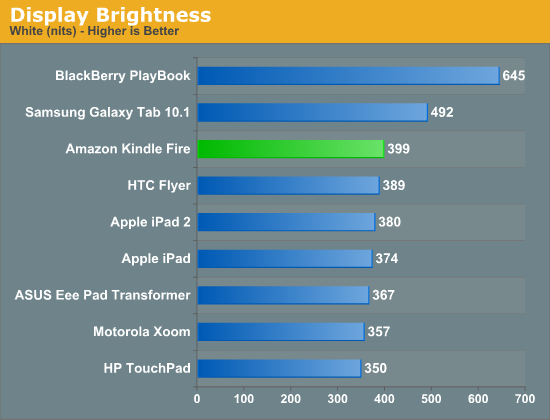
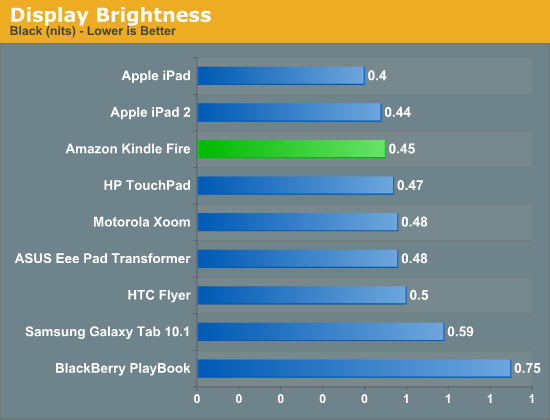
Display quality is pretty good. The 7-inch 1024 x 600 screen hits 400 nits at its brightest setting, and its black levels are reasonable at 0.45 nits. The resulting contrast ratio is good as well.
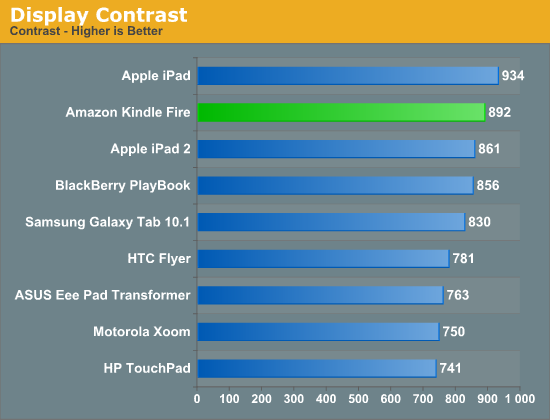
The white point is an almost Samsung-like 7200K across all brightness settings. Interestingly enough there's no difference in brightness once you get below 25% on the slider control.
The Form Factor
The first Kindle I ever bought was the second generation model. Upon receiving it I felt that it was the perfect handheld tablet form factor. The 2nd generation Kindle was both thin and light enough that it could truly be a book replacement. I'd carry it everywhere and it wasn't a burden to hold and read for hours.
The Kindle Fire strikes me with no similar feelings about its form factor. It's portable, more so than the iPad and it's reminds me of my old Kindle in surface area but that's it. The Fire is light enough to be held in one hand but when reading for extended periods of time I still find myself having to support the device with my chest if I'm lying on my back. There's simply no innovation in the form factor. While my old Kindle was the perfect form factor, the Fire is just acceptable.
This isn't all Amazon's fault however. The hardware in a plain old Kindle allows Amazon to build something ultra thin and ultra light. Moore's Law has yet to give us something that can perform as well as the Fire while operating within the confines (battery included) of a regular Kindle. I suspect that we'll eventually get to that point, however it may take a good three years for that to happen.
The standard Kindle's e-ink display is beautiful to read pages of books on, but it is hardly desirable for images or web content. The Kindle Fire is a bit better, but still not perfect in this regard. In text mode reading magazines or books is as pleasant as can be given that you're staring at an LED backlit LCD. If you're just going to be reading books, the experience on a vanilla Kindle is better. The advantage to the Fire of course is that you can do more than just read pages of text - it's good for magazines and web pages as well.
Unfortunately here the 7-inch 1024 x 600 display is limiting. It's virtually impossible to read a magazine (in magazine view) fully zoomed out like you would a book. I found myself preferring the text view of magazines I tried subscribing to on the Kindle Fire. Web browsing is more of a mixed bag. You get a really great browsing experience compared to a smartphone, or a really cramped browsing experience compared to an iPad. This is the same problem I pointed out in our PlayBook review:
Even when I'm not out and about, the PlayBook is quite usable as a content consumption device. In portrait mode fonts are a bit too small for me to read comfortably on the couch but in landscape it works well as a reddit browsing machine.It's in the couch-lounging usage model that the PlayBook does fall short of the iPad or Xoom. But in terms of portability the PlayBook is clearly a much better balance of functionality and mobility. If you read between the lines you'll come to the same conclusion I have: neither the PlayBook nor the iPad is the perfect form factor for a tablet. Further more, I'm not sure there is a single perfect tablet form factor.


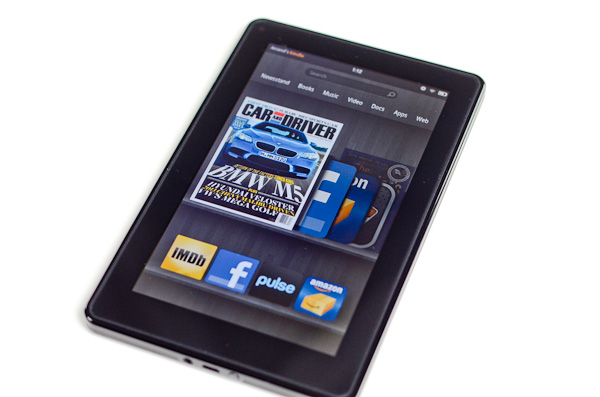
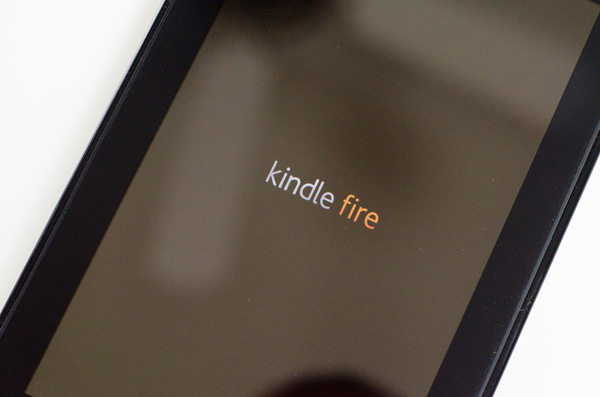
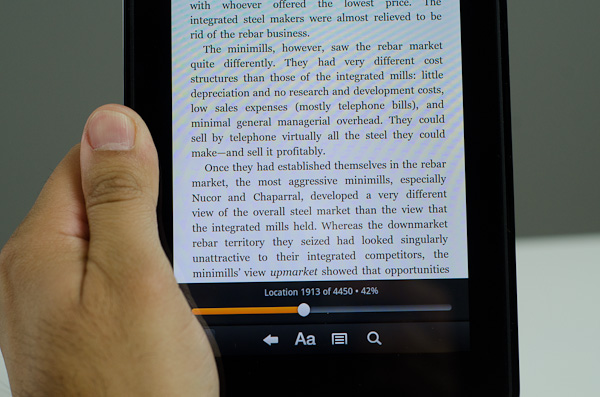
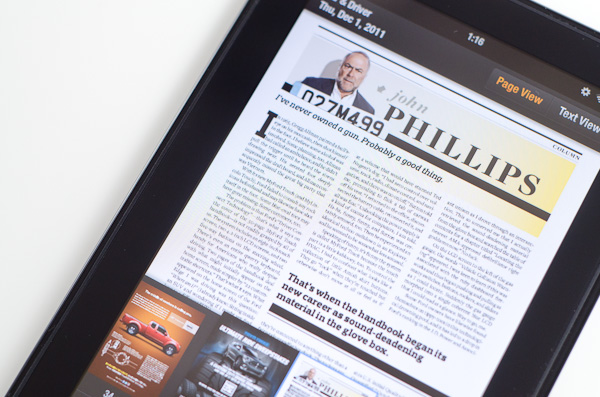








70 Comments
View All Comments
geniekid - Tuesday, November 29, 2011 - link
Just to add to what I said. At the start of the review you say "The Kindle Fire and iPad 2 couldn't be more different. They are vastly different sizes, shapes and prices. They even serve slightly different functions."I strongly disagree with that statement. If you asked me what a Fire was out of the blue, I'd say it was a tablet that let you read ebooks, watch movies, browse the internet, and run some third party apps. I'd say the exact same thing if you asked me what an iPad was. Without reading a review comparing the two, I would never know why the iPad is better at all those things. And I would never know why I might still buy a Fire knowing that the iPad is superior at all those things.
DukeN - Tuesday, November 29, 2011 - link
I feel like I'm RIM's personal crusader here on AT, as you seem to neglect their products quite a bit.Is this really a better device than the $199 Playbook? I suppose for Amazon content oriented folks it might be. Using that specific use niche as a decision maker, the Playbook would be better for those looking to pair it with their Blackberry device (no data plan required, or even Wifi).
The playbook at the same price right now gives you twice the storage, dual 5MP and 3MP cameras, 1080p video recording and silky smooth browser/multi-tasking performance.
Is the Fire really the best $199 tablet at the moment? I think until they spec up their hardware this isn't the case.
VivekGowri - Wednesday, November 30, 2011 - link
Can we have this conversation after the PlayBook gets a native email client?DukeN - Wednesday, November 30, 2011 - link
Um, it has one called the web browser. Just the way MAJORITY of people access their email with a PC/notebook at home. And it has one that works with users with Blackberry devices. Secondly, knowing that it is coming in February, doesn't it make more sense to buy the better hardware that will add one piece of software functionality? Also, I'll tell you what's blatantly unacceptable, A TABLET WITHOUT A CAMERA.Reflex - Wednesday, November 30, 2011 - link
Um, you can have web based email on a 7" screen. I'll take a native app, thanks. Web layouts suck on small screens. Furthermore, web based clients suck if I'm not online at the time, I can compose and send messages in an airplane on my Fire just fine and they will get delivered the next time I connect to a WiFi AP7, on a Playbook I'm stuck.Not saying the Playback is a bad device. Only that its incomplete in ways that the Fire and Nook are complete. If you have a BB, a Playbook is pretty much a given, but for the rest of us, thats not the case.
DukeN - Thursday, December 1, 2011 - link
If email is that critical to you, as a deciding factor, you probably already have the best thing for email. It's called a BLACKBERRY. And chances are, the only tablet you would then want to buy is a Playbook.The Fire is like buying a Core 2 Duo because it supports Outlook, while the Playbook is like an i7 that only supports Outlook Web Access until February.
Missing cameras, and half the storage (8GBs will go FAST) is a bigger shortcoming IMO.
Also, by your own words, if you have a BB the playbook is a given. So for millions of people in North America, it is the best tablet, according to you. So how is the Kindle a better buy, at $199?
Reflex - Thursday, December 1, 2011 - link
It depends on your needs. Nobody is saying that the Playbook is useless. But most people do not own a BB, or if they do they plan to migrate off of it soon(its losing customers quarter over quarter consistently now). And without a BB, the Playbook as it stands is a pretty limiting device.For someone with a BB, the Playbook is a strong consideration, especially if they intend to keep their BB. But for those of us who do not have a BB, the other 80% of the phone market(I use WP7), a Playbook makes little sense given its limitations. I don't care about a camera on a tablet, my phone does that fine. I do agree that 8GB is limiting, but it is a limit I am willing to live with. If storage was my primary concern I'd have a Nook Tablet since I can use SDHC on it. Also, Amazon has a much more complete app store, plus I can sideload apps from the Google Marketplace as well.
I'm not saying the Playbook is a big deal. But for those of us without a BB, its a pretty incomplete experience comaparatively.
doesitreallymatter - Friday, December 2, 2011 - link
For a hardware review site I find the conclusion that this is the tablet to get at $199 (as opposed to the playbook) very suspect.The biggest problems people seem to have with the playbook is the lack of a native email client, which RIM has stated is coming in Feb. This update in February is supposed to bring android support to the playbook as well, however limited it may be. As this review notes though, the app support appears to be limited for the fire as well.
So again, why is this tablet preferred over the playbook which has double the memory, front and back cameras and at least twice the storage?
There is a bias against RIM present in the media and that cannot be denied.
Not sure why I'm even bothering to post here. People have become more fanatic about their phones than people were back in the days of X gaming console is better than Y gaming console.
DukeN - Friday, December 2, 2011 - link
Thank you for saying it out loud.Still waiting for AT's review of a single BB 7 OS device.
I think I've seen major coverage of every single Android, and iOS updates here on AT. Even Windows phone reviews!
But not a single BB review. Granted, only 10-20% of smartphone users are RIM users, but that's still MILLIONS of people. And a lot more than what some of these android/WP7 devices will ever get.
doobydoo - Thursday, December 8, 2011 - link
You guys can't, or shouldn't just gloss over such a massive failure like not having a proper integrated email client.That's VERY important for a lot of people, and who wants to buy a tablet which they have to wait 3 months until they can use it properly (assuming the update even comes).
RIM have a bad reputation at the moment for several very good reasons and that's a legitimate factor too - they have all but failed already. People with BB's are moving away, and fast.
The amazon eco system is far superior and the Playbook is just an incomplete and uncompetitive mess.